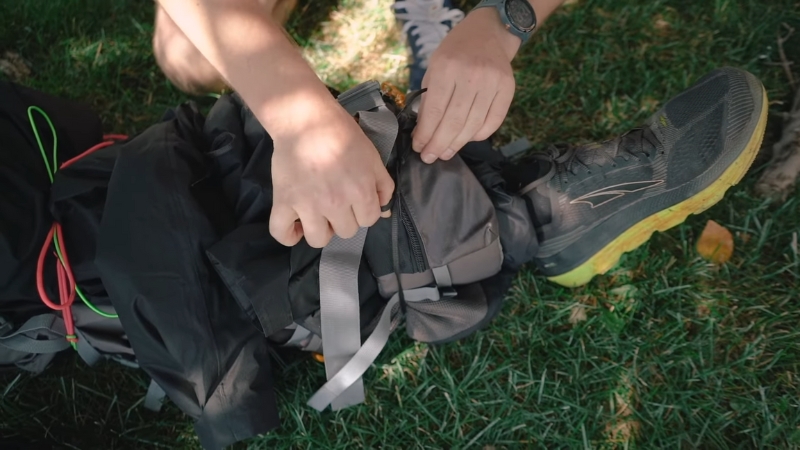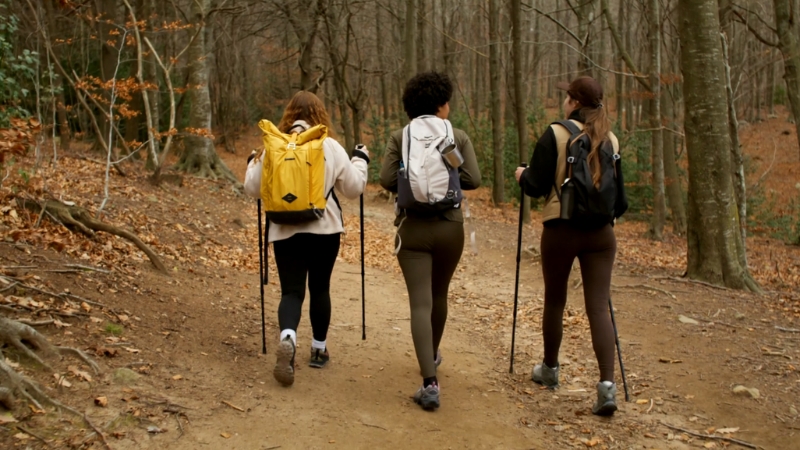Getting outdoors is one of the simplest and most rewarding ways to disconnect from the noise of everyday life.
Whether you are camping deep in the woods, hiking a mountain ridge, or taking a weekend road trip into the backcountry, the right gear determines whether your adventure feels effortless or exhausting.
Outdoor essentials have evolved dramatically in recent years. Lightweight materials, compact designs, and smart technology now make it possible to pack less while doing more.
The key to any successful trip is balance: durability, comfort, and practicality. From your clothing to your cooking setup, every item you carry should serve a clear purpose.
1. Reliable Shelter: Tents, Hammocks, and Sleeping Systems

A quality shelter is non-negotiable. Modern tents have moved far beyond the bulky, condensation-prone designs of the past.
Today, you’ll find ultralight freestanding tents made of ripstop nylon or Dyneema composite fabric that weigh less than 2 kg while still standing up to high winds and rain.
For warm climates or minimalist travelers, hammock tents are becoming increasingly popular. These provide elevated sleeping positions with bug protection and integrated rainflies.
Pairing one with an underquilt or insulated sleeping pad ensures comfort even during chilly nights.
Type
Weight Range
Ideal Conditions
Key Advantage
Freestanding Tent
1.5–2.5 kg
All seasons
Quick setup, stable in wind
Trekking-Pole Tent
0.8–1.5 kg
Backpacking
Lightweight, compact design
Hammock Tent
1–2 kg
Forest / warm climate
Elevated sleeping, minimal footprint
2. Clothing That Performs: Layer Smart, Move Freely
Your outdoor clothing should protect you from the elements while allowing full movement. In 2025, performance apparel focuses on breathability and stretch without sacrificing weather resistance.
Start with a moisture-wicking base layer made from merino wool or synthetic fibers to regulate temperature. Add a mid-layer fleece or insulated jacket for warmth, and finish with a waterproof outer shell for rain and wind. Breathable membranes like Gore-Tex Active or eVent are now standard among top-rated shells.
And when it comes to pants, skip the stiff, bulky ones. Outdoor enthusiasts are turning to Vertx jeans, a practical blend of tactical flexibility and casual comfort.
These jeans offer reinforced stitching, concealed pockets, and stretch denim that’s ideal for climbing over logs or crouching by a campfire. They look casual enough for travel days yet perform like utility wear in the wild.
Clothing Layer
Material
Function
Example Item
Base Layer
Merino wool/polyester
Moisture control
Long-sleeve thermal top
Mid Layer
Fleece / synthetic insulation
Retains heat
Lightweight puffer
Outer Shell
Gore-Tex / nylon
Wind and rain protection
Waterproof jacket
Bottom Layer
Stretch denim / softshell
Mobility and abrasion resistance
Vertx jeans
3. Footwear Built for Terrain

Shoes can make or break a trip. Inconsistent terrain demands traction, ankle support, and water resistance. For long hikes, mid-cut hiking boots with Vibram soles provide the best stability on uneven trails.
If you prefer lighter gear, trail running shoes are perfect for fast, low-weight adventures.
Modern hiking footwear often includes breathable waterproofing membranes, aggressive tread patterns, and shock-absorbing midsoles. And don’t overlook socks, merino wool socks regulate temperature and prevent blisters better than any synthetic blend.
Footwear Type
Terrain
Weight
Notable Features
Hiking Boots
Rocky / mountainous
1.2–1.6 kg/pair
Ankle support, durable
Trail Runners
Dirt/forest
0.6–0.9 kg/pair
Lightweight, breathable
Approach Shoes
Climbing / mixed terrain
0.9–1.1 kg/pair
Sticky rubber soles
Water Shoes
River / coastal
0.4–0.6 kg/pair
Quick-dry, slip-resistant
4. Lighting and Power: Don’t Let Darkness Win
View this post on Instagram
A post shared by Gwyn and Ami Manser | PNW + USA adventure travel (@gwynandami)
Light is both safety and comfort. A headlamp with adjustable brightness is indispensable for nighttime hikes or campsite chores. Choose LED models with a minimum of 300 lumens and a red-light mode to preserve night vision.
Portable solar power banks and compact battery stations have replaced disposable batteries for most campers. In 2025, high-capacity lithium packs with fast USB-C charging can power phones, GPS devices, and even small cooking gear.
Some models feature built-in solar panels, making them excellent for multi-day expeditions off-grid.
After a long trek, a warm meal can completely change morale. Lightweight camp stoves such as Jetboil or MSR PocketRocket models remain the go-to options for backpackers. For car campers, portable propane systems allow full meal preparation. Compact titanium cookware is now standard, resistant to corrosion, easy to clean, and barely adds any pack weight. Don’t forget a collapsible sink or biodegradable soap for cleanup. For hydration, gravity-fed or UV-based water filters are more reliable than chemical tablets and can purify liters of water per hour. In remote terrain, navigation is your lifeline. Traditional topographic maps and compasses still matter, but in 2025, most outdoor travelers rely on GPS devices and offline navigation apps like Gaia GPS or AllTrails+. Modern handheld GPS units feature global satellite coverage, real-time weather tracking, and emergency SOS functions that connect directly to rescue services. For communication, compact satellite messengers allow text and location sharing even without cell coverage, a crucial safety tool in the wilderness. Even short trips require preparation. A small first aid kit with antiseptic wipes, bandages, pain relief medication, and moleskin for blisters should always be in your pack. Advanced users can add hemostatic gauze and splint wraps. Other emergency must-haves include a multi-tool, fire starter, space blanket, and whistle. Together, these cover nearly every survival scenario, from gear repairs to signaling for help.
Item
Power Output
Key Function
Average Runtime
LED Headlamp
300–600 lumens
Hands-free lighting
10–20 hrs
Lantern
500–1200 lumens
Area illumination
15–40 hrs
Power Bank
20,000–30,000 mAh
Phone/GPS charging
3–5 full charges
Solar Panel Kit
20–100W
Off-grid recharging
Dependent on sunlight
5. Cooking and Hydration Gear

Category
Recommended Gear
Benefit
Cooking
Jetboil Flash / MSR PocketRocket
Quick boil time, compact
Cookware
Titanium pots/pans
Lightweight, durable
Water Filtration
Sawyer Squeeze / Grayl
Removes bacteria and viruses
Hydration Pack
2–3L bladder system
Hands-free drinking while hiking
6. Navigation and Communication
Tool
Use Case
Connectivity
Battery Life
Compass & Map
Basic navigation
None
Unlimited
GPS Device
Trail navigation
Global satellite
20–30 hrs
Satellite Messenger
Emergency comms
Iridium network
100+ hrs standby
Smartwatch
Health + tracking
Bluetooth / GPS
15–30 hrs
7. First Aid and Emergency Tools

Item
Purpose
Weight
Recommendation
Compact First Aid Kit
Treats minor injuries
<0.5 kg
Include antiseptic & gauze
Multi-Tool
Repairs/cutting
0.3 kg
Leatherman Wave+
Fire Starter
Warmth/signaling
Negligible
Ferro rod or waterproof matches
Space Blanket
Hypothermia prevention
0.1 kg
Reflective emergency wrap
8. Packing It All Together
An organized backpack keeps every item accessible. For weekend trips, a 40–50L pack is usually ideal; multi-day expeditions may require 60–80L.
Look for ergonomic suspension systems, ventilated back panels, and waterproof roll-top closures.
Modern backpacks now feature modular compartments for gear, hydration packs, and electronics. Accessory straps allow you to attach sleeping bags or trekking poles without cluttering internal space.
Conclusion
The outdoors in 2025 is more accessible than ever, but nature still demands respect and preparation.
The essentials you bring aren’t about luxury; they’re about freedom, self-reliance, and safety.
Modern GPS guidance systems are also revolutionizing industries like farming, ensuring precision and efficiency in every field, much like how a GPS beacon helps navigate the wilderness.
From a reliable tent to sturdy boots, a GPS beacon to a good pair of Vertx jeans, every piece of gear has a role to play.
Related Posts:
- Best Fungicides for Wheat Rust - 2025 Guide for…
- Top 7 Drought-Tolerant Vegetables to Grow This Summer 2025
- Is Your Garden Just a Jungle? 10 Tips to Help You…
- 3 Best Tractors for 50-Acre Farms in 2025 (With Prices)
- Top 10 Must-Have Tools for Every Arborist 2024 –…
- Can Gallstones Cause Fatigue And Dizziness?…








